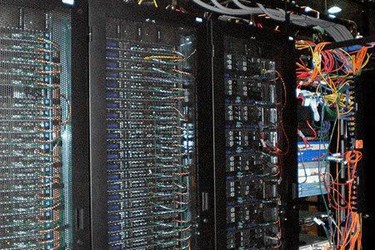How MSPs Can Take The Lead On A More Economic And Operationally Attractive Approach To The Repatriation Of Datacenter Workloads
By Bernie Wu, MetalSoft

Many MSP customers initially turned to the public cloud to facilitate rapid innovation of their business models but are now re-evaluating such moves and increasingly seeking to optimize their costs. Some have discovered public cloud expenses can seriously impact their margins, profitability, and overall valuations.
A recent study by Andreessen & Horowitz, The Cost of a Cloud, a Trillion Dollar Paradox (2021), highlights this issue and the growing awareness of the long-term cost implications. Some companies have begun “repatriating” their workloads, such as Dropbox, while others have tried to move toward a hybrid multi-cloud approach. Dropbox’s 2017 S-1 disclosed that $75M was saved over two years from repatriation. The article also estimates that repatriating $100M of annual public cloud spending can be cut to less than 50% of that amount based on a total cost of ownership, including server racks, real estate, and cooling to network and engineering costs.
Even with TCO reductions of 50% from repatriation, companies may still be hesitant to move forward due to a lack of personnel, infrastructure expertise or space, and even remote worker considerations. They also face the daunting task of setting up infrastructure and operations for the data center either on-prem or at a colocation center. MSPs looking to add value in the customer relationships they serve around this issue should become the go-to experts on overcoming this challenge ahead of 2022.
Bare-Metal Automation Lets Enterprises Effectively Manage Their Hybrid Cloud
For MSPs with a customer base wishing to move forward, a new alternative for deploying, provisioning, and operating a repatriated data center is now available using next-generation bare-metal cloud automation platforms. The capabilities these software platforms offer go far beyond traditional bare-metal server deployment tools by offering HW vendor-independent bare-metal server, storage, and network deployment, provisioning, and life cycle management. The platforms are programmable using Infrastructure as Code (IaC) allowing operators to set up multi-tenant self-service, automated deployment of applications such as VMware, Kubernetes, NoSQL databases, and include built-in monitoring and metering.
Because these platforms orchestrate DC infrastructure at the bare-metal level, they also deliver application platform independence allowing them to concurrently provision and orchestrate VM, container, and bare-metal workloads simultaneously.
These bare-metal cloud automation platforms can be deployed by enterprises at colos or peering points to facilitate hybrid or multi-cloud cloud use cases as well as in one’s own data center for maximum security. MSPs also can use these platforms to build and remotely operate similar provisioning, deployment, and life-cycle management services for their clients. Cluster-level scaling, as well as Application, OS, BIOS, and firmware level upgrades, can now be automated using policy-based workflows, and TOR network switches can automatically be provisioned according to a tenant’s requirements.
This higher level of automation can further reduce costs beyond the Andreessen & Horowitz study, resulting in over 80% savings over public clouds. Remote, lights-out management is enabled, and operations engineers can be freed up from essential, but routine operational tasks to focus on applications operations and collaboration with other IT teams.
Conclusion
Companies are more seriously looking at data center workload repatriation as cloud costs significantly begin to impact their profitability and valuations. Next-generation bare-metal automation platforms deployed by either their MSPs can facilitate this repatriation and result in up to 80% Total Cost of Ownership cost savings. At the same time, IT operations can be freed up from routine but essential tasks so that they can focus on higher-value activities that support their businesses.
About The Author
A technology executive leader, Bernie Wu is currently Head of Business Development for MetalSoft. He has 25+ years of experience as a senior executive at data center hardware and software infrastructure companies including companies such as Conner/Seagate, Cheyenne Software, Trend Micro, FalconStor, and Levyx. He has a BS/MS Eng. from UC-Berkeley and an MBA from UCLA.
